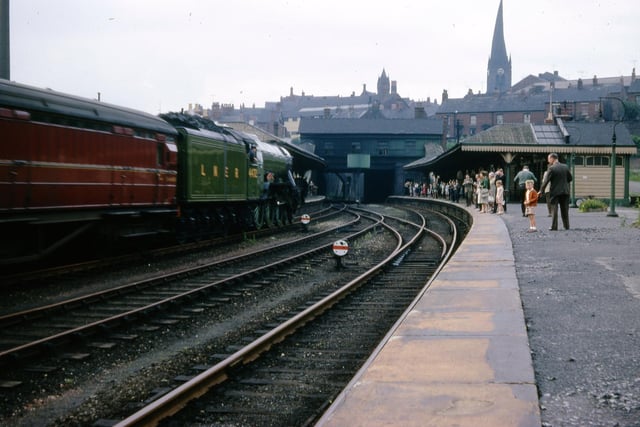Maps of the town at the start of the 20th Century show the extent of railway development – with tracks radiating in all directions, accompanied by freight marshalling yards, locomotive depots and a series of historic stations serving different communities.
Only Chesterfield Railway Station survives – others closed in the Beeching cuts of the 1960s, or even earlier as competing lines were closed when companies were amalgamated.
We are grateful to Philip Cousins, of Chesterfield and District Civic Society, for producing this list of lost stations in the borough.
Philip has also thanked members of the Derbyshire Victoria County History Chesterfield research group for contributing to the article.

1. Chesterfield Market Place Station
The Lancashire, Derbyshire and East Coast Railway's Market Place station, next to the Portland Hotel, was opened in 1897 and closed to passengers in 1951. After some years as a paint and carpet warehouse it was sadly demolished in 1973. Philip Cousins, from Chesterfield and District Civic Society, said: "Though it was planned to, the railway never reached Lancashire nor the East Coast. It was taken over by the Great Central Railway (GCR) in 1907, became part of the London and North Eastern Railway in 1923 and was part of British Railway’s (BR) Eastern Region from 1948. From here you could catch trains to Lincoln, Mansfield and stations in between, though the service was always sparse." Photo: Philip Cousins

2. Manchester, Sheffield and Lincolnshire Railway station, Infirmary Road
Another demolished station was the Manchester, Sheffield and Lincolnshire Railway (later GCR) station on Infirmary Road. Its site is now covered by the inner relief road – officially known as Great Central Way. Phlip said: "First built as part of a branch from the company’s main line at Staveley, work on making the line into a loop had started while the branch was still being built. This involved construction of the tunnel through Chesterfield, part of which still remains. Opened in 1892 the station closed in March 1963. It had passed into LNER hands in 1923, then into BR’s Eastern Region in 1948." Here, the last passenger train – headed by the ‘Flying Scotsman’ steam locomotive on its way to London Marylebone on June 15, 1963. The booking (ticket) office was at street level, with stairways down to the platforms. Photo: Philip Cousins

3. Sheepbridge and Brimington Station
The next station on the GCR’s line towards Staveley was Sheepbridge and Brimington, at the bottom of Wheeldon Mill. Philip said: "Like that at Chesterfield, stations on this part of the GCR were of wooden construction and were lauded by railway historian Gordon Biddle as being among the best of their type. This station opened in June 1892 and closed in 1956. The platform buildings on the left survived, minus their canopies, until April 2010, when they were destroyed by fire." This Edwardian photograph shows the two station platforms, the signal box and footbridge, with presumably the station master and some of his staff and possibly family, posed for the camera. Photo: Philip Cousins

4. Staveley Works Station, for Barrow Hill
On the same line, a station for Staveley Works (for Barrow Hill) was carried over the Chesterfield Canal on a bridge, in the area of the present Hollingwood Hub. Some of these embankments and their abutments still survive. This wooden station building also opened in 1892 and closed in 1963. The 1892 datestone in a nearby wall was originally at the Chesterfield Tunnel entrance portal on Infirmary Road. It was rescued from storage by members of the Chesterfield Canal Trust. In this picture, the brickwork, either side of the far lock gate, is a remnant of the bridge abutments. This part of the canal was diverted here to enable construction of the railway. Photo: Philip Cousins

